人教版新目标初中英语九年级下册We’re trying to save the manatees说课稿5篇
-
- 页数:29页
- 字数:约 35397 字
- 大小:154.50KB
- 格式:.doc
- 版本:Office2016及以上版本
- 作者:尹超工作室
We’re trying to save the manatees说课稿5篇
We’re trying to save themanatees! Section A1a 1b 1c说课稿
各位老师,评委:
大家好!
让学生在我的课堂上快乐地学习英语是我不懈的追求。今天,借此平台,有机会与各位同行交流,希望大家指导我的说课。谢谢!

我说课的内容是人教版新目标(Go for it)九年级英语Unit15 We’re trying to save themanatees!的Section A的1a 1b 1c. 我主要是从教材分析、学生分析、教学目标、教学策略、教学过程、效果预测等几个方面进行具体的阐述。
教材分析
本单元是九年级的最后一个教学新课的单元。这个单元主要是围绕着有关濒临灭绝的动物这一话题,让学生学习怎样保护我们的环境,以及就某一问题展开辩论。在学习新知识的同时,还复习一般现在时(Present Simple)、现在进行时( PresentProgress)、一般过去时( Past Tense)、现在完成时(Present Perfect)等时态及被动语态(PassiveVoice)。本课为第一课时,是培养听说能力为主的新授课。这节课要为整个单元的学习起到一个热身的作用,不仅要求学生掌握一定的词汇量,为下面的学习打下很好的基础,而且要求学生收集有关濒临灭绝的动物的信息,为后面的话题提供了充分的语言基础和语言依据。因此,我把本课的重点、难点确定于:1、语音、词汇方面:一些表示动物名称的名词(nouns)和描写动物特征的形容词(descriptionwords);2、通过听说等练习,让学生运用描述动物的形容词来描述所看到及所知道的动物的特征,同时也复习一般现在时表示主语具备的性格、特征的用法。
学生分析
通过差不多三年的初中英语学习,这个学期的九年级学生已经掌握了一定的英语基础,包括有关动物名称的名词及描写动物特征的形容词等等;加上这个年龄的学生在心理方面也相对比较成熟,思维也非常活跃,他们收集信息,整合信息的能力也有所提高,也能运用所具备的英语知识及收集到的信息来就某一话题展开辩论,并能在讨论话题时灵活运用已经学习过的语法(即,一般现在时等时态)来正确地阐述自己的观点、反驳他人的观点,达到进行英语辩论的目的。
教学目标
依据新课程标准,根据上述的教材内容、地位和作用的分析,以及学生的认知结构、思维能力和心理特征的分析,结合多媒体教育资源在课堂上的合理使用原则,我制定了如下的教学目标:
(一)语言知识目标
1、能辨认出课件中显示的各种动物,并能说出它们的英文名称:
2、能学会一些描述动物特征的形容词;
3、能用描述动物特征的形容词,并用一般现在时的语言结构来描述所想到、看到或知道的动物的特征。
(二)语言技能目标
1、能听懂听力内容,并能从中获取相关信息,完成相应的练习;
2、能用英语表述自己的外貌、性格特点在某些方面与某个动物相似,并能根据同伴的表述,猜出相应的动物英文名称。
(三)情感态度目标
1、学生能通过描述动物,了解动物,从而体会到保护环境的重要性;
2、学生能在小组活动中与他人积极合作,能在交流中注意聆听,获取信息、分享信息;同时也增进了相互间的了解。
(四)学习策略目标
1、学生课前通过各种媒体搜集有关濒临灭绝的动物的信息;
2、通过听力获取信息;
3、通过小组活动合作、探究学习获取信息;
4、通过看图完成短文填空获取信息。
(五)文化意识目标
1、能更多关注动物和环境。
教学策略
依据新课程标准,根据上述的教材分析、学生分析及教学目标的制定,配合多媒体教育资源,我主要采用了多媒体辅助教学、直观教学法、游戏教学法、情境教学法以及任务型教学法等。(其具体的设计,我会在下面的教学过程中作具体的阐述。)
教学过程
教学过程的设计我主要分为三大环节,即学前(Pre-learning),学中(While-learning)和学后(Pos-learning)。
(一)学前(Pre-learning)
1、告知学生本节课的主要学习内容(T: Today,we’regoing to learn the names of some endangered animals and to learn some newdescription words that are used to describe the animals. Also we’ll learn touse these description words to describe some animals.)
(设计思路:通过告知学生本节课的教学内容,使他们有学习的心理准备,并激发他们的学习兴趣与动机。)
2、热身(Warming-up)及导入新课(Leading-in)
通过设计How much do you know about animals?(关于动物你了解多少?)的抢猜谜语的游戏比赛,导入新课。首先,课前我利用多媒体等各种教育资源,设计了一些有关动物名称的谜语,让学生分成4组进行抢答。学生抢答之前,我先宣布抢答规则(T: I havetwelve riddles about animals for you! You can vie to answer(抢答)them one by one. You can work with your group members. If you know themystery(谜底)to the riddle, please raise your handand stand up to answer it as quickly as you can!If your answer is right,thenyou’ll get one point for yourself and your group! But if your answer is wrong, the other groupswill have a chance to answer the same riddle. PS: If you don’t know how to sayit in English, it’s OK if you speak Chinese .You must begin after I say“BEGIN!”)。确定学生明白规则后就开始进行抢答。揭晓谜底时,利用课件把谜底用动物图片和它的英文名称显示出来。最后,进行统分,评出优胜组和优胜个人。
谜语:
1、Which animal is the biggest on land?
2、Which animal is the most noisy inwater?
3、Which animal is the biggest in theworld?
4、Which animal is the tallest in theworld?
5、Which animal only lives in Australia?
6、What animal is our national treasure?
7、Which animal is the ship of thedesert?
8、Which animal is the king of the forest?
9、Which animal runs fastest in the world?
10、Which animal is the symbol animal inAustrial?
11、Which animals look most like the humanbeing?
12、Which animal is the smartest exceptthe human being?
(设计思路:通过设计有关动物名称的谜语,以游戏比赛的形式进行抢答,创设了学生合作学习,探究的机会;抢答规则的设计不仅面向全体,而且也关注个别差异;谜底通过课件展示图片及其英文名称,让学生从视觉的角度熟悉相关动物及其英文名称,既复习了学过的词汇,也引出了本课的一些词汇。活跃课堂,又激活学生已有的知识和经验,为后面的学习创设了良好的有意义的语言环境。)
(二)学中(While-learning)
1、学习新词汇(learning newvocabulary)
A)让学生们一个一个地说出有关动物名称的名词:如,elephant, koala, whale,camel,panda,dolpin,tiger,lion,fox,monkey, octopus, giraffe, polar bear,cat,pig, manatee, kangaroo, chimpanzee,cheetah..学生说的同时,我把这些单词写在黑板上,本课新单词用不同颜色的粉笔写,然后,让学生齐读一遍,强调较难的单词的读音。
(设计思路:依据“利用各种教育资源,提高学习效率”这一教学原则,这个环节我使用了黑板,粉笔这些传统的教育资源是考虑到学生有可能会说出我课件中没有出现的动物名称。)
B)借助多媒体教育资源,我事先设计了一些动物的图片(动物有一个的,也有多个的,目的是要学生注意区分名词的单、复数。)上课时,在屏幕上一张张呈现这些图片,让学生仔细观察图片,一个个说出动物的英文名称e.g.panda,lion,tiger,giraffe,manatee,kangaroo,chimpanzee,cheetah…并说出描述该动物的形容词。e.g. smart,cute,lazy,beautiful,gentle,shy,noisy,fast,playful,enormous,aggressive,black,strong, gray,spotted, furry big…学生说时,我小结整理,并把动物名称的名词呈现在图片的上方;描述该动物的相应的形容词呈现在图片的下方,本课的新单词用红色显示并让学生齐读一遍,我注意强调那些较难的单词的读音。
(设计思路:激活学生已有的知识和经验,开拓了学生的思维,活跃了课堂气氛,通过的媒体课件展出的各种各样动物的图片,让学生从视觉的角度熟悉、了解、学习重点词汇,避免了枯燥乏味的说教,让学生在轻松的愉悦的氛围中学习,为进一步的语言结构提供基础。)
2、操练(Pratice)
A)活动1a的设计思路我认为是为强化本课的重点词汇及为下一步的听力练习打下基础的任务型活动,同时也培养学生的发散思维。首先,我先让学生跟着录音跟读一遍本页上的新单词;接着,让学生看1a的图画,让他们读出图中动物的单词,提醒学生注意这些单词的单复数及较难单词的读音;再接着,又让学生读一遍图上方的形容词;然后,让学生按照1a的指示语把形容词填在相应的位置上,并增加他们自己所认为的形容词。同时,我巡视教室,检查学生的进展,必要时提供帮助。最后进行反馈,对于不同学生给出的不同的答案,简要评出最贴切的答案,如有意见不一致的,可建议课后查阅相关资料等等。
B)活动1b的听力练习是以听的方式进行目标语言的输入活动,让学生从输入的语言中获取信息,并进行加工、整合,复习本课的重点词汇的同时,也为后面的目标语言的输出活动做好了准备。我是这样组织教学的:首先,创设情境,让学生看1a的图画,仔细听我说。T:This is a zoo. Victor and Ginny are visiting some wonderful animals. Theyare talking about the animals. You will hear what description words they use todescribe the animals. Please listen carefully and circle the words in 1a thatyou hear.引导学生明白1b的指示语,然后,播放录音。第一遍要求学生只听不做;听第二遍时,在1a中圈出所听到的形容词;边播放第三遍录音,边让学生核对答案,要求学生一听到答案时就喊“Stop!”,我就暂停播放录音,如果错了,就重听该句子,直到学生听懂为止,接着让学生看书本后的听力材料,划出刚才听不出来的目标语言,然后跟着录音读一遍。最后老师小结一般现在时表示主语具备的能力,性格,特征的用法。
(设计思路:创设情境是为了使学生能在真实的语境中学习目标语言,并通过听、读的方式来获取信息,完成相应练习。)
(三)学后(Pos-learning)
Pos-learning这个环节主要是巩固目标语言的输出活动
1、Groupwork: A guessing game.首先T:Let’s play a guessing game!接着,帮助学生明确活动1c的指示语,然后让三名学生角色朗读1c右边的对话,再接着让学生每个人用英语写一、两句话来描述自己与某动物在某些方面怎样相似,不要写出动物的名称。最后,要求几位学生读出自己的描述,让其他学生进行抢答,猜出他(她)所描述的动物。
完成任务所需的语言结构:1)I am like this animal because I am …and… 2)I like this animal because I like …and Ilike to eat… 3)You’re like a/an… 4)No! 5)Yes,youare right!
(设计思路:通过1c猜猜看这个游戏,训练学生对目标语言的听力和口语表达能力。)
2、Task1: “Do you know the animalswell?”Please work in groups and classify different kinds of animals accordingto the chart.
学生小组活动,写下他们知道的
The names of the animals
Animals that can live on land
Animals that can live in water
Animals that love eating meat
Animals that love eating grass or leaves
动物的英文名称。同时,我巡视学生任务的进展,必要时给予帮助。最后,进行小组反馈,对于学生出现的不同看法,可让他们回去查阅更多的资料帮助他们学习。
完成任务所需的语言结构:1)In our group, we think …can live onland, …can live in water,…love eating meat,…love eating grass or leaves.
(设计思路:让学生把动物分类,通过这个任务可以培养学生的自主学习能力,既复习了本课的目标语言,又使学生扩大了词汇量。也为后面的课时学习收集信息,奠定学习基础。)
3、Task2:look at the picture and fill inthe blank with your partner.
My favorite animals are pandas. I like them very much because they aregentle and shy. They are also 1________to people. And they look funny, too.Their eyes are the most interesting part. The black circles around their 2_____make them look like they are wearing glasses or have just been in a fight.Their favorite food is bamboo 3______. They don’t like to move around verymuch. But now pandas are endangered .For one thing, people have destroyed manyof their habits. For another, they don’t have 4______ food to eat. We mustthink of ways to 5_______ them. I think we should build more panda zoos and plant morebamboo for them.
I hope everyone can do something for animals, so that we can keep ourworld rich and colorful and full of interesting animals.
(设计思路:利用课件呈现一张熊猫的图片及短文,通过让学生与同伴合作完成有关熊猫的短文填空,最后进行全班反馈。既巩固本课目标语言,又为后面的学习搜集了相关的信息,同时也培养学生之间的合作探究学习能力。)
4、Summary(小结). T: Todaywe’ve learnt some English names of some endangered animals and learnt to usedescription words to describe them.But do you know why they are endangered?What should we do to protect them?Please finish the homework after class and tellme your answers next time.
(设计思路:通过简短的课堂小结,重现本课的学习重点内容,交代作业的同时又提出问题让学生课后思考,为下节课的学习做好准备。)
5、Homework.(作业)
Make a surveyabout the endangered animals and fill in the form. You can surf the informationon the Internet.
Names of animals
Desciption
Habitat
Reason why they are endangered
Number
(设计思路:通过让学生课后通过各种媒体搜集有关濒临灭绝动物的资料,引导学生多关注动物和环境,同时为后面的学习奠定了一定的语言基础。)
附:板书设计
Unit15 We’re trying to save the manatees!(Section A 1a,1b,1c)
Endangered animals:
Animals
are
our
friends!
Description words:
chimpanzee,manatee,kangaroo,
cheetah, polar bear, elephant, panda,lion,tiger,giraffe...
gentle,furry,enormous,playful,
noisy, shy, strong, fast,aggressive, gray, spotted…
Manatees are enormous, they are very gentle and very shy.
I am like this animal because I…
(设计思路:为了突出本课的重点难点,使学生一目了然,我设计了简明扼要的板书。)
效果预测
这节课不论是导入新课及新知识的呈现,还是游戏的设计及巩固,都能紧紧地抓住学生、吸引学生,让学生积极参与到课堂中来。学生在玩中学,学中用,提高了课堂实效,培养了学生学习的兴趣。我相信通过这样的教学,充分让学生主体参与,是一定能圆满实现课堂教学任务的。(
We’re trying to save themanatees! Section A -3a说课稿
尊敬的各位专家、老师们:
下午好!今天我说课的内容是Unit 3 We’re trying to save the manatees!(第二课时Section A -3a),它是鲁教版义务教育实验教科书九年级第三单元的第二节课。本次说课从以下五个环节展开:教材分析、教法和学法、教学过程、板书设计、教学反思。
一、教材分析
(一)、教材的地位与作用
本节课是一节阅读课,通过对两篇短文的阅读,完成任务型活动——小小辩论会。这是一个全班参与的互动活动,通过辩论,让学生在互相合作中学习掌握并使用目标语言,培养阅读能力的同时,也提升学生发表个人见解、表达思想的能力。
(二)、学情分析
从学生的年龄特征和认知特征来看,九年级的学生相对比较成熟,思维活跃,有个人的独立见解,并且通过三年的学习,已有了一定的知识储备,听说读写四项技能得到全面发展,能够简单地运用英语表达自己的看法。但是,在把书本知识化为学生的知识储备,再以需要的方式表达出来,仍有一定的难度,需要学生多方面的努力。本节课旨在提升学生的记忆、编辑信息、表达、合作交流等多方面的能力。
(三)、教学目标
根据教材的编排,我设计了三维目标。
1、知识与能力目标:
知识目标:
学习suitable, cage, educate, urge, disgusted等新单词,掌握音、形、义;
复习巩固be surprised to do, take care of 等已学过的短语;
复习宾语从句和被动语态;
能力目标:
了解辩论会的规则,提升学生合作交流、发表见解的能力;
2、过程与方法目标:
运用头脑风暴复习第一课时的内容,并导入新课,布置任务型活动——小小辩论会,介绍辩论会的开展方式和规则,然后在快读判断对错—细读完成表格—再读释疑—录音跟读—自我朗读的一系列任务链活动中,完成对篇章的理解,继而合作交流展开辩论、得出结论、解决问题,形成书信阐述个人见解。
3、情感态度与价值观目标:
了解濒危及珍稀动物的生存现状,增强保护动物和保护环境的意识,争做文明辩论员。
(四)、教学重点、难点
教学重点:
1、正确运用宾语从句和被动语态;
2、辩论依据的收集和表达,即支持和反对建动物园的目标语。
教学难点:对被动语态的正确运用。
二、教法和学法
本节课通过头脑风暴法和五步阅读法开展任务型教学。在教学过程中,通过头脑风暴温故导新,设计任务引发新的认知冲突,建立知识间的联系。五步阅读引导学生深入语篇,激发好奇心,使其在积极的自主活动中主动参与任务的过程,并运用知识解决问题,享受学习带来的乐趣。
本节课的学习方法采用自主探究法与合作交流法相结合,旨在让学生从自主探究中发展,从合作交流中提高。
三、教学过程
本节课的教学过程围绕任务型活动,我设计了三大环节:
(一)任务前:(6分钟)
1、 头脑风暴:你都知道哪些动物?能描述一下它的体性吗?
用四幅图片引导学生描述第一课时学过的内容。
2、呈现任务:介绍任务背景和任务型活动——小小辩论会,明确辩论主题,说明辩论的开展方式和规则,做文明辩手。
(二)任务中:(30分钟)
1、 任务型阅读:即五步阅读法(20分钟)
(1)快读判断对错,考察学生对篇章的大意了解;
(2)细读填写表格,让学生在阅读中对知识进行整理分类,收集辩论依据;
(3)再读寻找疑难,考察学生的自我探究能力,采用合作交流的方式进行释疑,教师做必要的补充,并点明需要注意和牢记的知识点,拓展操练;
(4)录音跟读,校正语音、语调、语速等;
(5)自我朗读,旨在反复阅读文章,加深理解,培养自信,为下一步辩论表达打基础。
2、 小小辩论会(10分)
(1)将学生分成两组,抽签决定正方与反方,宣布双方观点,各选出四名辩手展开辩论;
(2)展示辩论所需的目标语,举例说明;
(3)限定辩论时间,开始辩论;
(4)公布辩论结果,评选最佳辩手。
(三)任务后:(8分钟)
1、发表见解
通过辩论提出问题:Should a new zoo be built in our town? 独立思考,然后小组合作交流,解决问题,向全班报告你的见解。
2、小结:从三维目标的制定角度,让学生来谈本节课的收获,知识、能力、方法、情感态度和价值观等。
3、中考链接:课堂小练习
4、作业:根据你对辩论主题的见解,给编辑写封信阐明你的看法。
四、板书设计:
(因为有多媒体辅助,再加上导学提纲,所以板书以简洁、突出重点为主,内容为目标语言,即重点短语和句子)
Phrases:
1.be against doing sth.
2. in one’s life
3. be suitable for sb.
4. be surprised to do sth.
5. care for =care about
6. take care of =look after
7. urge sb. To do sth.( ask, tell, want,allow, encourage, like,etc)
8.provide sb. withsth.= provide sth. for sb.
五、教学反思
本节课以任务型活动开展阅读教学,达到学以致用的目标。复习环节的头脑风暴,就在开始激发学生思维,活跃课堂气氛,从知识上和精神状态上帮助学生做好上课准备,顺利导入新课。
以往的阅读教学枯燥单调,学生为了记忆在一遍遍阅读,缺乏学习动力;这节课的设计打破了阅读课堂的沉闷,任务型活动吸引学生的全员参与,引发学习热情,亲身体验成为阅读的动力;既为了让学生反复阅读,熟悉文章,理解含义,掌握目标语,又避免单一的阅读形式,我采用了五步教学法,每一次阅读有不同的目的,提出不同的要求,限制不同的速度,使得课堂节奏有张有弛,保持了学生的注意力。
任务型阅读是为了给核心任务的完成打基础,而辩论会的召开也为学生刚学到的知识派上了用场,在学中用,在用中学,同时培养环保意识;作业的布置将运用语言落实到笔头,全面训练学生的听说读写能力;考虑到九年级的中考目标,我设计了几个课堂小练习,学生易错易混的地方,中考的考查要点都在其中。
本节课不放心的地方就是辩论会,形式新颖,但学生有些陌生,在时间上和程度上都不好掌控,因此要预测可能出现的问题及对策,以保证课堂目标的顺利实现。
本次说课到此结束,敬请各位专家、老师批评、指正,谢谢!
We’re trying to save themanatees! Section A第三课时说课稿
一、教学理念及特点:
《英语新标准》中提出:“要组织内容丰富,形式多样的英语活动”。所以本课在任务型教学、合作探究式学习、体验式教学及如何开发学生潜能方面做了很大努力。设计本课时力求体现以下理念和特点:
第一,以学生为主体,面向全体学生,尊重个体差异,通过合作交流要发展共性,更要注意保持个性,对于谈论设立动物园的好处与坏处,每个同学都有不同的看法。
第二,注意英语学科与德育渗透的原则。通过动物及动物园设立的好处与坏处,教育学生要关爱动物。
第三,注意挖掘潜能,为学生综合能力发展设平台。
二、教学内容
本课是新目标英语九年级第15单元Section A第三课时,本课时的语言目标是复习现在完成时态,被动语态,并利用他们来谈论是否应建立动物园,教学中采用任务型教学法,通过活动途径,让学生自主、合作、互动、交流中习得语言。
三、教学目标
1、知识目标:词汇: care for,be against doing sth. urge sb to do sth. tiny,cage,educate,
句型:I think that/I don’t think that
I agree with you./I disagree with you. I agree/disagree that
2、能力目标
读:能在规定时间内了解短文大意,并获取具体信息。
写:讨论和辩论后能综合自己的讨论结果,写一篇简单的文章(回信)。
3、情感目标:能在小组活动中积极参与合作,相互帮助,共同完成学习任务;让学生知道,要关爱动物。
4、学习策略
(1)认知策略:根据需要进行预习。
(2)调控策略:要求每个学生都积极参与课内外英语学习活动。
(3)交际策略:在课内外能与他人交流。
四、教学重点与难点:利用现在完成时,被动语态,宾语从句来谈论是否应建立动物园,先小组合作讨论再辩论。
五、学习任务
课前;查找收集有关动物及是否要建动物园的相关资料。
课堂任务:设计情景分组对抗来辩论动物园的好处与坏处
六、学生状况:总的来说,该班学生能积极参加课堂教学活动,英语听说读写能力都比较好,很多学生思维比较活跃,语言表达能力强。
七、教学策略
1、开放式教学策略。以有限的课堂为栽体,带学生进入更广阔的天地。
2、兴趣激发策略。通过搞辩论赛,激发他们参与的欲望,点燃他们思维的火花。
3、任务型活动策略:课前课中都有任务,让他们通过查找资料与交际活动来学习语言。
八、教学手段:本课采用任务型教学法、情景法、交际法,同时辅助多媒体教学。
Teaching steps:
Step 1 Duty report(2分钟)
Step 2 Lead in(2分钟)
T:According to his /her report,We know something about animals.Animals areour friends and some of them are endangered.We should try to save them.But doyou know what we should do? S:I think we shouldbuild zoos.They can be looked after well in zoos.
T:That sounds goodDo you agree with him?
S:I don’t agree with him.zoos are not good places for animals.They are notfree.
T:Good.That sounds funny.
Today we are going to learn 2 passages about the advantages anddicadvantges of the zoos to animals.
Step 3 Learn new words and phrases(3分钟)
Please tarn to page 120
Before reading them.Let’s learn some new words and phrases(用多媒体呈现)
1.be against doing反对干……be for doing.支持干
Lucy is against building a zoo,but LiLy is for doing so.
2.be suitable for sb todo sth.适合某人于
The room isn’t suitable for us to live in
3.Care for关爱
We should care for Chilchen and old people.
4.tiny微小的5.Urge sb to do.强烈要求某人干
读并让学生造句(略)
Step 4 Reading practice(8分钟)学生阅读并回答相关问题
T:Now I’ll give you some time to read the 2 passages and answer thequestions(用多媒体呈现问题)
Q1:Is “Disgusted”against or for building a zoo?Why?
Q2:What about“Animal friend?”Why?
几分钟之后让学生回答这几个问题。
Step 5 Listen and read(5分钟)放录音并让学生跟读
T:Please listen to the tape and read after it.然后再让学生集体朗读
OK!Now Let’s read them together.
Step 7 Group work(6分钟)把学生分别甲、乙两大组,甲组讨论支持建动物园的理由。乙组讨论反对建立动物园的理由。
T:Next we are going to have a debate(辩论)contest
Before it,I have to devide you into two groups.Linel-5(1-5排)is Group甲and you talk about why we should build zoos.Line6-10(6-10排)is Group 乙and you talk about why we shouldn’t build zoos.Are you clear?
S:Yes给时间学生准备
Step 8 debate(辩论) contest(10分钟)
T:Are you ready?Let’s begin.Group甲should be first.You should use these useful expressions.
板书
I think that……I don’t think that
I agree with youI disagree with you
I agree that……I feel that
Step 9 Writing Practice(7分钟)让学生根据他们刚才讨论的结果分别给“Disgusted”与“Animal friend”回一封信。甲组学生给“Animal friend”回信,乙组给“Disgusted”回信。
Now I want you to write a letter to“Disgusted”and“Animal friend”accordingto what you talked about just now.Line1-5 write to“Animalfriend”Line6-10write to“Disgusted”
Step 10 Home work(2分钟)要求学生综合刚才辩论赛的内容写一篇综合性的文章,题目就是:What do you think of building a zoo?
用多媒体呈现课堂小结及家庭作业
T:Let’s see what we have learnt to day.
We have learnt some new words and phrasec.We have learnt the advantagesand disadvantages about building a zoo.After class you should practicewriting.Here is the home work:
Write a short passage-“What do you thinkof building a zoo?”according to the contest.
十一、Blackboard design:
we are trying to save the manatees!
Section A Period Three
I agree with you I think that
I disagree with youI don’t thinkthat
I agree that
I feel that
We’re trying to save themanatees! A第三课时说课稿二
一、说教材
(一)教材的地位及作用
1、新目标英语教材概述
《新目标英语》教材的语言教育理念是:知识用于行动强调“语言应用”,培养“创新、实践能力”,发展“学习策略”。它采用任务型语言教学(Task-based Language Teaching)模式。教材中每单元都设计一个或几个与该单元话题有关的任务,让学生在完成任务的过程中,使用英语获取信息,用英语进行交流,解决实际问题的能力。
(二)教学目标
本单元的话题内容题,学习应该怎样保护我们的环境及就这一话题展开讨论主要是围绕着有关濒临灭绝的动物这一话题,根据话题内容本单元我设计了以下教学目标:
复习语法:现在进行时、一般现在时、用used to表示一般过去时、现在完成时、一般过去时的被动语态;学会表达同意和不同意;复习并学会以下基本句型:--We are trying to save the manatees.
--Manatees eat about 100 pounds of food a day.
--There used to be a lot of manatees.
--In 1972, it was discovered that they were endangered.
--Some of the swamps have become polluted.
在能力上我要求学生学会说各种动物的名称以及用描述动物的形容词等描述它们的习性;学习有关环境保护的语言;能使用简单的目标语言制作环抱宣传海报;能利用废旧物品制作有用的物品,并向大家做简单的介绍;能使用本单元语言进行辩论。通过本单元的学习学生能了解一些濒临灭绝的动物的生活习性和濒临灭绝的原因,教育学生应该如何保护环境。在文化目标上我要求学生了解西方护物和爱护环境的做法和行动。
(三)教学重点及难点
本单元的重点是要学生学会有关辩论的基本用语,对濒危动物和环保话题进行辩论。
难点是复习一些语法:现在进行时、一般现在时、用used to表示一般过去时、现在完成时、一般过去时的被动语态。并进行准确运用。
二说学情
“以学生的发展为本”的新课程理念,要求教学必须以学生的学习基础、学生需要、学习兴趣等为出发点,联系学生的现代校内外生活,让课堂教学成为学生生命成长和个性张扬的过程。要实现“以学生为本”的理念,教学中必须要做到充分地预设学情。
初三学生已经具备了一定的语言基础及语言表达能力,同时大部分学生对英语还有着比较浓厚的兴趣。同时,在长期的新课程理念熏陶及实践中,已经初步具备了自主,合作,探究的能力。
三说教法
新课程倡导教师的地位发生了极大变化,是课程的引导者,同时又是参与者。因此本节课我采取逐步引导,层层深入的教学法,同时尽可能多的挖掘学生的潜能,使老师和学生作到极好的配合。
1)点拨法充分发挥老师的引导作用,注意新旧知识的联系与疏通整理。
2)合作探究法以小品,竞赛的方式适时去鼓励学生学习英语的兴趣和热情。
We’re trying to save the manatees!
The Third Period
Ⅰ. Teaching Aims and Demands
1. Knowledge Objects
(1) Key Vocabularyagainst, be suitable for, tiny cages, educate, care for, urge
(2)Target Language Ithink that animals should not live in zoos.
I disagree with you. I feel that zoosprovide clean and safe places for endangered animals to live.
2. Ability Objects
(1) Train students integrating skills.
(2) Train the abilityof expressing studentsown opinions.
3. Moral object
Animals are our friends. We must know howto love them and how to protect them. That way, It isgood for both animals and us.
Ⅱ. Teaching Key Point
Train students integrating skills.
Ⅲ. Teaching Difficult Point
How to improve studentsintegrating skills.
Ⅳ. Teaching Methods
1. Fast-reading method
2. Groupwork and pairwork
Ⅴ. Teaching Aids
1. A projector
2. The blackboard
Ⅵ. Teaching Procedures
Step I Revision
T: Yesterday we learned the target language and reviewed some grammar. Now who can makesentences using the grammar we reviewed yesterday.
S1 : I’m answering a question.
S2 : My mother goes shopping every week.
S3 : She used to live in the countryside, but now she lives in thecity.
S4 : He was made to do so.
S5 : She has learned a lot of new words.
T: Very good.
Step Ⅱ3a
This activity provides reading practice u-sing the target language. Show the keyvocabulary words on the screen by a projector.
against prep.反对;违反
suitable adj.合适的;适宜的
tiny adj.极小的;微小的
cage n.笼子;囚笼
educate v.教育;培养
public adj.& n 公众(的);民众(的)
care for 关怀;照顾
urge v.强烈要求;竭力主张
Read the words and ask students to re-peat again and again until they canpronounce the words fluently and accurately. Go through theinstructions with the whole class.
Invite a student to read the letter to the class. Correct anypronunciation errors to make sure the student is providing a good model for therest of the class.
Get students to read the letter on their own again and underline thereasons why the writer is opposed to zoos.
Check the answers with the class.
Answers
Zoos are terrible places for animals to live.
The animals are kept in tiny cages and can hardly move at all.
And they are only given food once a day.
Notes
1. tiny—very small
2. Culture note: Many Westerners are extremely concerned about animalwelfare and often support organization to protect them. Such protectionincludes the ethical treatment of farm animals and animals in zoos. Some people feelthat we should not eat any food made from animals or wear any animal products,including leather shoes.
Step Ⅲ 3b
This activity provides reading and writing practice using the targetlanguage.
go through the instructions with the class.
Invite a student to read the letter to the class. Correct anypronunciation errors to make sure the student is providing a good model for therest of the class.
Ask students to read the letter again. Then finish thework on their own or in pairs. When they work,walk around the classroom, checking the progress of the pairs and offering helpas needed.
Check the answers. Answers will vary but a good letter will take the points from the letteropposite to their point of view and argue with them.
A sample answer
Dear Editor,
After reading the two letters, I realize that I must say something aboutanimals and zoos. I don’t agree with Disgusted. In fact, manyanimals only eat once a day or once every few days, so feeding them just once aday is not a problem at all. I think zoos arevery important to animals. They can stopmany endangered animals from being killed or hunted. They can provideman with places for research work. Also we can visitthe animals in the zoos to learn some knowledge to protect the animals better.
Sincerely,
Write the letter on the blackboard as an example.
Notes
1. living—active: lively
2. care for—look after; provide food, money, shelter, etc.
3. urge—request earnestly; try to persuade; strongly recommend
Step Ⅳ Part 4
This activity provides oral practice using the target language.
Go through the instructions with the class. There will be twodifferent teams. One team will talk about why zoos are good places for animals and theother team will say why zoos are bad paces for animals.
Look at the list of expressions. Invite a studentto read the list aloud to the class. Then get somestudents to use each expression in a complete sentence.
S1 : I think that elephants shouldn’t be kept in zoos.
S2 : I believe that animals in zoos live longer than animals inthe jungle.
Put students in two teams. Let each teamwork together as they write down some statements showing their viewpoint, usingthe expressions in the box.
Look at the sample language in the box. Invite a pair ofstudents to read it to the class.
SA : I think that animals should not live in zoos.
SB : I disagree with you. I feel that zoosprovide clean and safe places for endangered animals to live.
Ask the two teams to debate in class.
First, call on one team to give a statement. Then ask theother team to give a statement that is related to the first statement. Help the teamsmake several different statements about a single point before going on toanother point.
For example:
Team 1: I think that zoos are not suitable for animals to live in.
Team 2: Why do you think so?
Team 1: Because animals there are only given food once a day. They’re hungry.
Team 2: I disagree with you. I believe thatmany animals only eat once a day or once every few days. So, there is noneed to worry about that.
Step Ⅴ Summary
In this class, we’ve learned some key vocabulary words such as against, besuitable for, tiny cages, care for, urge. We’ve also done alot of reading, writing and speaking practice using the target language.
Step Ⅵ Homework
1. Finish off the exercises on pages 61~62 of the workbook.
2. Write the letter to the editor.
Step Ⅶ Blackboard Design
We’re trying to save the manatees!
Section A
The Third Period
Dear Editor,
After reading the two letters, I realize that I must say something about animals and zoos. I don’t agree with disgusted. In fact, many animals only eat once a day or once every few days, so feeding them just once a day is not a problem at all. I think zoos are very important to animals. They can stop many endangered animals from being killed or hunted. They can provide man with places for research work. Also we can visit the animals in the zoos to learn some knowledge to protect the animals better.
Sincerely,
We’re trying to save themanatees!说课稿
一.教学内容;We’re trying to save the manatees!.
二. 所在班级情况,学生特点分析;
一.所在班级情况,学生特点分析
担任一班英语教学,班级规模分45人,学生学习刻苦,但大多英语基础都不好,班级内部两极分化严重。学生普遍不善于运用英语进行交流。
三.教学内容分析
1. Knowledge Objects
(1) Key Vocabulary
planet, recycle, shower, paper towels, napkins, turn off
(2) Target Language
We really shouldn’t use paper napkins, you know.
I know. I stopped using them last year.
2. Ability Objects
(1) Train students speaking and listening ability.
(2) Train students ability to understand the target language in spoken conversation.
(3) Train students ability to use the target language.
3. Moral Object
We should be aware of the importance of protecting the environ
planet, recycle, turn off
四.教学目标
1. How to train students speaking and listening ability.
2. How to use thetarget language.
五. Teaching Methods
1. Listening method
2. Pairwork to makeevery student work in class.
l六. Teaching Key Points
1. Key Vocabulary : Planet, recycle, turn off
2. Target Language :We really shouldn’t use paper napkins, you know. Istopped using them last year.
七. Teaching Difficult Points
1. How to train students speaking and listening ability.2. How to use thetarget language.
七.Teaching Aids
您可能喜欢的文档
查看更多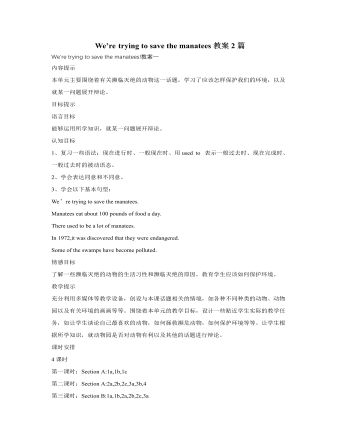
人教版新目标初中英语九年级下册We’re trying to save the manatees教案2篇
- 页数:16页
- |大小:146.50KB
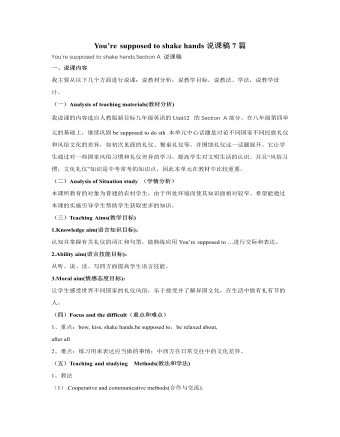
人教版新目标初中英语九年级下册You’re supposed to shake hands说课稿7篇
- 页数:20页
- |大小:107.00KB
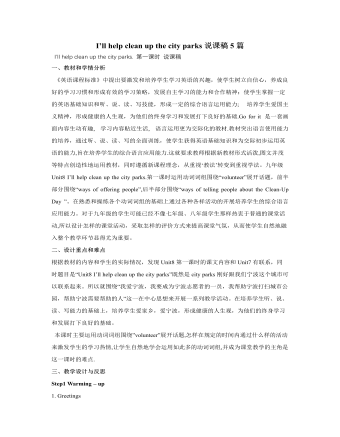
人教版新目标初中英语九年级下册I’ll help clean up the city parks说课稿5篇
- 页数:17页
- |大小:95.50KB

人教版新目标初中英语九年级上册I used to be afraid of the dark说课稿4篇
- 页数:22页
- |大小:344.00KB
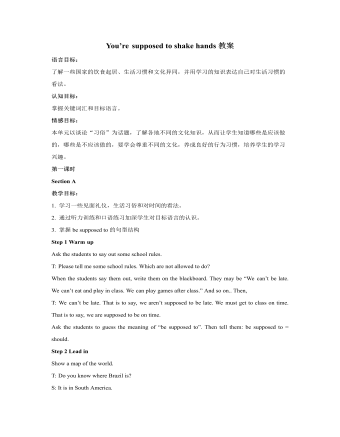
人教版新目标初中英语九年级下册You’re supposed to shake hands教案
- 页数:9页
- |大小:59.50KB

人教版新目标初中英语九年级上册It must belong to Carla说课稿5篇
- 页数:22页
- |大小:93.50KB
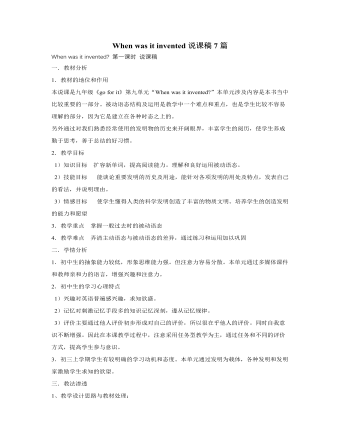
人教版新目标初中英语九年级下册When was it invented说课稿7篇
- 页数:26页
- |大小:113.00KB
热门说课稿
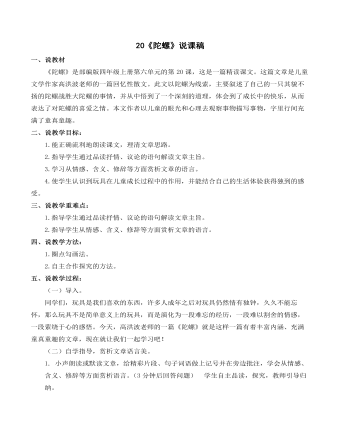
《陀螺》说课稿
- 页数:4页
- |大小:39.00KB
- 说课稿
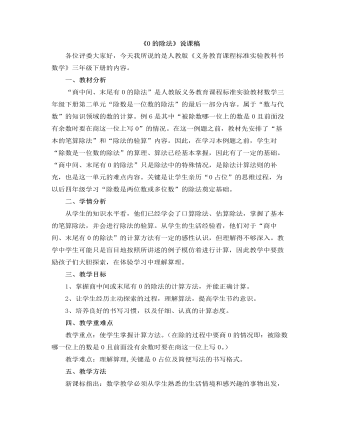
小学数学人教版三年级下册《0的除法》说课稿
- 页数:6页
- |大小:34.92KB
- 说课稿
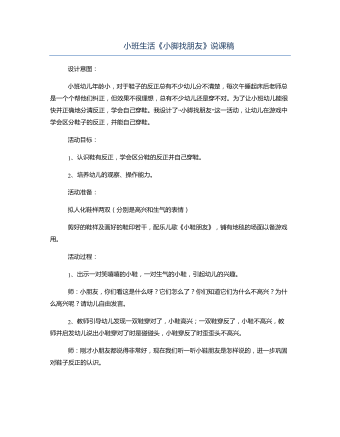
小班生活《小脚找朋友》说课稿
- 页数:2页
- |大小:33.31KB
- 说课稿
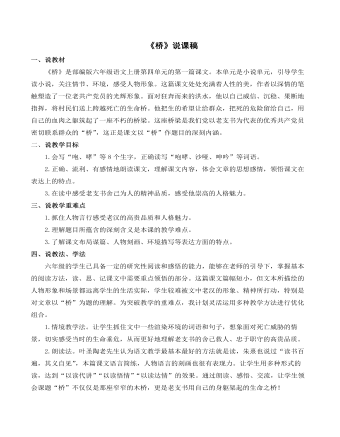
《桥》说课稿
- 页数:5页
- |大小:42.50KB
- 说课稿
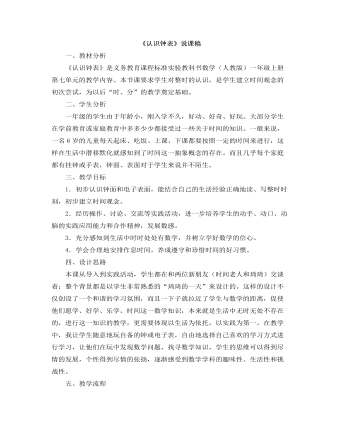
小学数学人教版一年级上册《认识钟表》说课稿
- 页数:4页
- |大小:24.27KB
- 说课稿
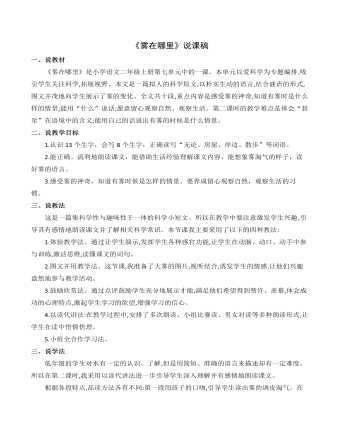
雾在哪里说课稿
- 页数:3页
- |大小:46.00KB
- 说课稿
今日更新

精选高中生期末评语
- 页数:42页
- |大小:7M

××县招商局2024年上半年工作总结
- 页数:12页
- |大小:142.54KB

“四零”承诺服务创建工作总结
- 页数:5页
- |大小:39.83KB

“改作风、提效能”专项行动工作总结
- 页数:6页
- |大小:139.05KB
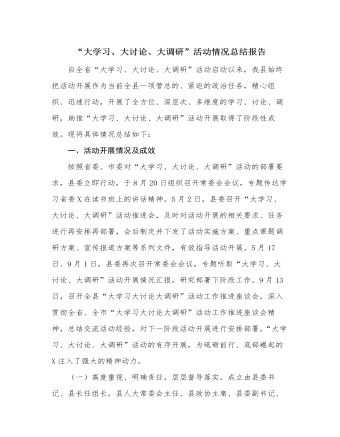
“大学习、大讨论、大调研”活动情况总结报告
- 页数:7页
- |大小:26.12KB
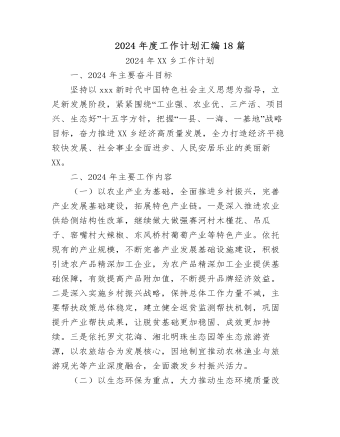
2024年度工作计划汇编(18篇)
- 页数:72页
- |大小:196.93KB





